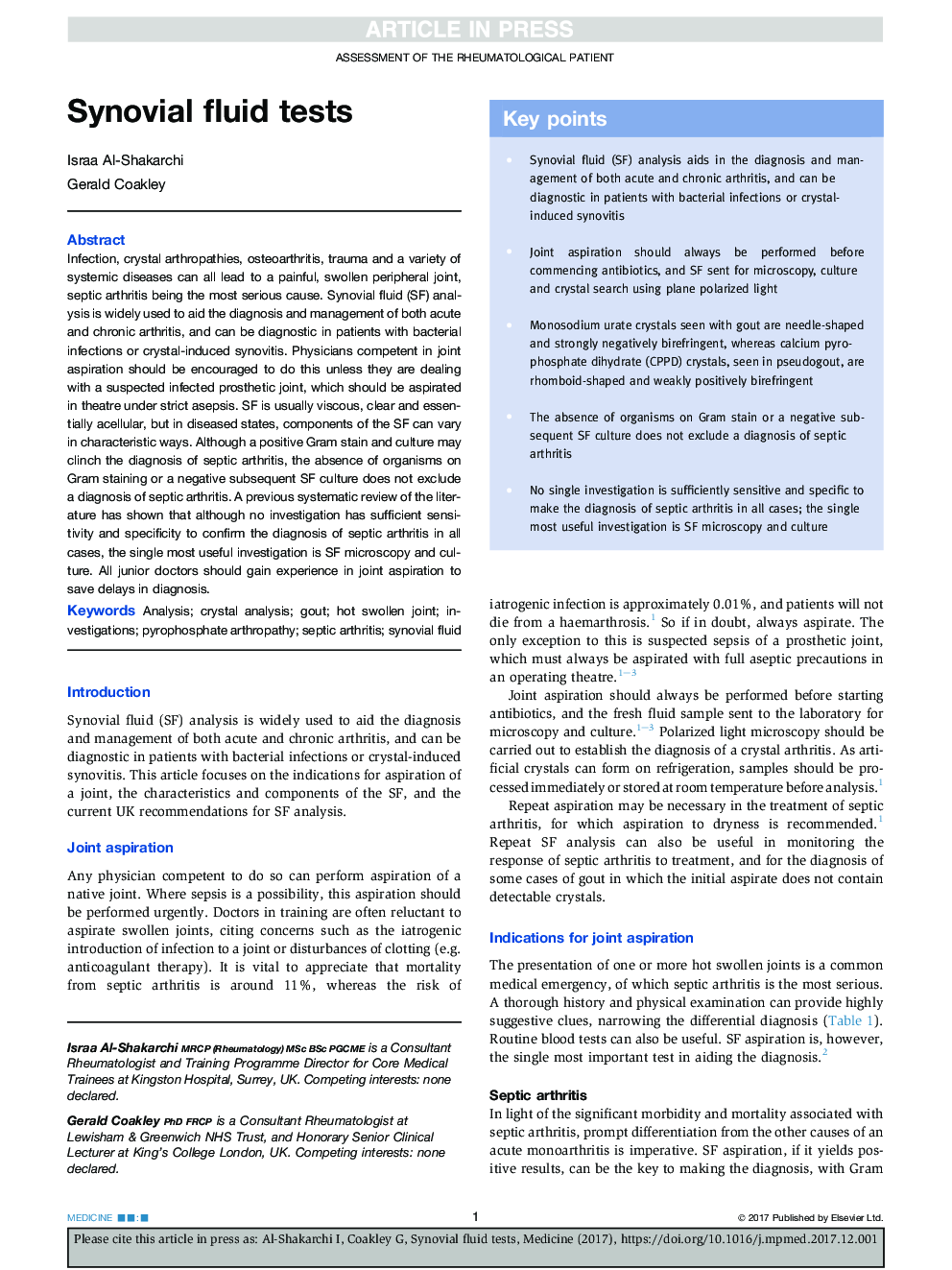| Article ID | Journal | Published Year | Pages | File Type |
|---|---|---|---|---|
| 8764060 | Medicine | 2018 | 4 Pages |
Abstract
Infection, crystal arthropathies, osteoarthritis, trauma and a variety of systemic diseases can all lead to a painful, swollen peripheral joint, septic arthritis being the most serious cause. Synovial fluid (SF) analysis is widely used to aid the diagnosis and management of both acute and chronic arthritis, and can be diagnostic in patients with bacterial infections or crystal-induced synovitis. Physicians competent in joint aspiration should be encouraged to do this unless they are dealing with a suspected infected prosthetic joint, which should be aspirated in theatre under strict asepsis. SF is usually viscous, clear and essentially acellular, but in diseased states, components of the SF can vary in characteristic ways. Although a positive Gram stain and culture may clinch the diagnosis of septic arthritis, the absence of organisms on Gram staining or a negative subsequent SF culture does not exclude a diagnosis of septic arthritis. A previous systematic review of the literature has shown that although no investigation has sufficient sensitivity and specificity to confirm the diagnosis of septic arthritis in all cases, the single most useful investigation is SF microscopy and culture. All junior doctors should gain experience in joint aspiration to save delays in diagnosis.
Related Topics
Health Sciences
Medicine and Dentistry
Medicine and Dentistry (General)
Authors
Israa Al-Shakarchi, Gerald Coakley,
